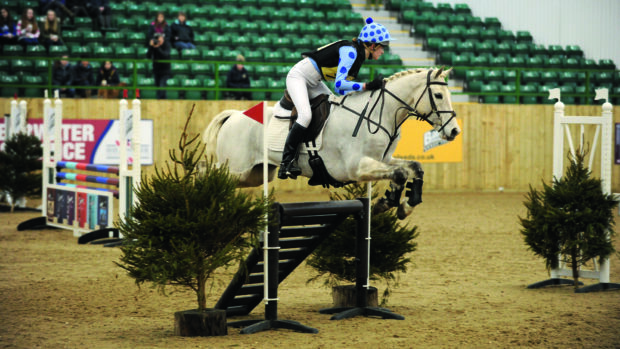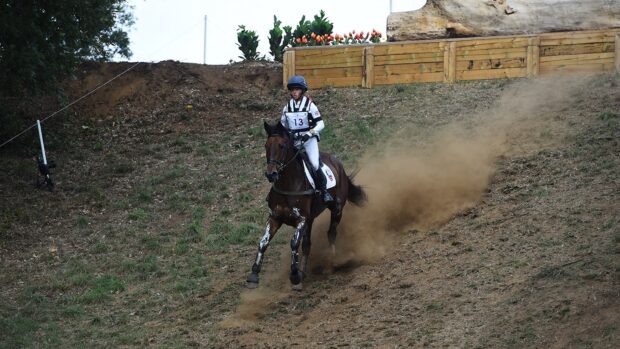Riding a grid of fences teaches a horse to land on the right leg and makes the rider aware of their line, explains five-star event rider Ben Way (pictured), who tells us his tips for improving horse rideability.
Aim
This is an exercise I picked up during an Equine Pathway training day with the aim of improving horse rideability. The aim is to improve a horse’s focus, straightness and rideability between fences. It is also good for making the rider conscious of their line and teaching a horse to land on the right leg.
I use the layout of a very standard grid and am looking for the horse to lock onto the fence — even though you may be jumping it at an acute angle — and stay on the line you have chosen. They should stay straight, think for themselves and shorten their stride independently.
It should also make the horse more aware of the front leg on the inside of the angle on the figure of eight, as this will need to act more quickly as it has less room than the one on the outside of
the angle.
Improving horse rideability

1. The height and layout of the fences can vary depending on the experience and ability of the horse. I build the grid down the centre of the school and start off with a cross-pole, with one stride to an upright and then two strides to a parallel oxer. All fences need to be built so that they can be jumped from both directions.
2. Begin by riding a figure of eight over each fence individually, starting with the cross-pole, before moving on to the next fence in the grid (see diagram one).
3. For more experienced horses, you can then add the second element of the exercise by riding a curving line over the first and third parts of the grid in a figure of eight (see diagram two).
4. The fences simulate a combination on the cross-country so you want the horse to be listening so they know where they are going, on which leg and to which fence.

Tips and pitfalls
- For younger horses I tend to make sure that there are ground lines on all fences. For the older and more experienced horses I take these away.
- If horses aren’t used to jumping on an angle, I always jump the cross-pole first out of trot to give them time.
- It is vital to make sure you are very clear with your aids, so your horse knows which fence to jump, and avoids locking on to the wrong fence.
- The further apart the fences are built, the less acute the angles will be on the figure of eight. If you have a problem, open the distance up to three strides between the second and third element.
You might also be interested in:

#SundaySchool: Jumping a horse on an angle with Francis Whittington
This simple exercise provides a solid foundation for skinnies and arrowheads to help you when jumping a horse on an

#SundaySchool: Georgie Spence and the benefits of working over bounces on a curve
Event rider Georgie Spence explains how performing bounces on a curve can teach a horse to be quick and neat

Subscribe to Horse & Hound magazine today – and enjoy unlimited website access all year round
Horse & Hound magazine, out every Thursday, is packed with all the latest news and reports, as well as interviews, specials, nostalgia, vet and training advice. Find how you can enjoy the magazine delivered to your door every week, plus options to upgrade to access our H&H Plus online service which brings you breaking news as it happens as well as other benefits.




